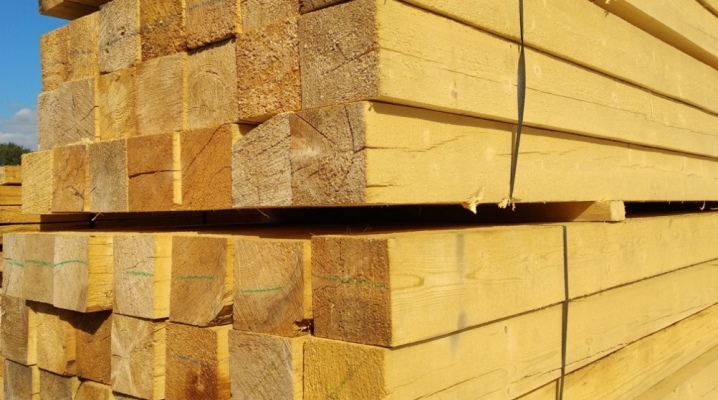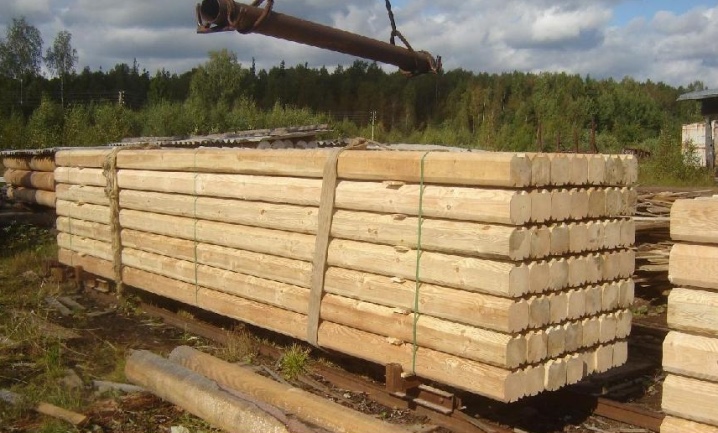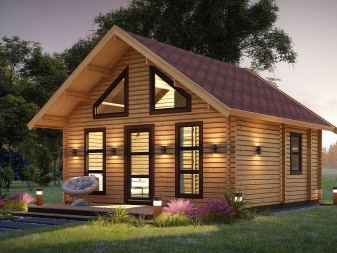What is a 150x150x6000 mm timber and how much does it weigh?

Wooden houses are very popular today due to the comfort of living - in summer it is cool in such a house, and in the cold season it is cozy and warm. As a rule, pre-prepared logs or beams serve as wall material. In construction, preference is often given to timber - even geometric dimensions allow you to quickly erect walls, and the timber itself does not require long shrinkage.
When designing various wooden structures, several indicators are taken into account - the size, volume, weight and amount of lumber used, depending on the type and characteristics.


Species overview
A beam of 150x150x6000 mm is suitable for the construction of a summer kitchen, bathhouse, gazebo. This size is one of the most common, and although the length of the materials may vary, suppliers generally offer 6 meters.
The surface of the building material is slightly rough, does not contain holes, cracks and traces of bark beetles.

Consider the types of timber.
- Natural moisture - wood with a moisture level of 82-87%. A high level of moisture is typical for freshly sawn material. Such building materials are in demand among consumers due to affordable prices, but it is important to take into account that it is difficult to work with raw sawn timber, since the timber will dry out over time in any case, and this will lead to its severe deformation during shrinkage of the structure, as well as the appearance of cracks and mold.

- Dry - a tree dried naturally or in specialized chambers, with a moisture level of 10-20%. The deformation of such materials due to the shrinkage of the building will be minimal. Accordingly, not only will the beautiful appearance be preserved, but cracks, mold will not appear, and the structure will not "twist".

- Chamber drying - wood is dried in a special chamber equipped with air heaters. The drying process is automated - an optimal drying mode is maintained in the chamber, which depends on the size of the timber, the type of wood and its initial moisture level.

- Sliced - made from ordinary timber, divided into non-profiled and profiled. Chips are exposed to both one and several or all sides of the product, which directly affects the price of the final product. Dry planed timber has strict geometric dimensions and retains them for a long time. Due to these properties, it is widely used, including stairs and window openings.

- Non-profiled - a log with a residual moisture content of about 30% is sawn off from four sides to a section of 150x150 mm. Such a bar simplifies and speeds up the construction of a house or foundation, and also has an attractive price-performance ratio.

- Profiled - the manufacturing algorithm is similar to non-profiled, but the quality is one level higher. At the workpiece stage, grooves, depressions and protrusions are cut, strictly corresponding to each other. The “thorn-groove” assembly is easy (similar to the assembly of a construction set for children).

- Calibrated - any timber that has undergone special processing (dried and cut in strict accordance with the specified parameters). In the same batch, different products must be with the same cross-section and the same shape. For example, ordinary, profiled and glued timber 150x150 mm is a calibrated timber.

- Edged - made by sawing logs according to strictly specified parameterstaken directly from solid wood. As a result, four-edged products are created, the feature of which is fixation.The material is sufficiently tightly attached, making it easy to install.

- With a groove - on the upper and lower parts of the logs, lock joints are cut out for the most tight abutment of the timber. The smooth surface of the sides and the presence of ridge elements allow to build a beautiful and warm house. Thanks to this material, the walls are erected without cracks, and the likelihood of moisture penetration into the structure and the possibility of the start of the decay process is also reduced. Profiled timber is a sawn timber with a groove.

- Pine - durable lumber (density is 500 kg per 1 m3), often used for the construction of load-bearing structures. It has a number of advantages - ease of processing, high thermal insulation and moisture resistance, minimum waste after processing, durable and aesthetic material with a wide range of colors.

- Larch - hard wood (30% harder than pine, spruce), has good resistance to decay, characterized by fire, bio and moisture resistance, heat capacity. The materials are effective in decoration, practical and economical due to their high performance, mechanical and aesthetic properties. The main advantage is the strength, superior to that of other conifers (for example, pine, spruce or cedar).

- 2nd grade - the quality of lumber is allowed a small number of defects (splits, cracks, knots). It is considered acceptable if the maximum length of cracks is no more than 1/3 of the length of the product, knots of the minimum diameter, and no more than 3 small traces or 1 large trace of wood-boring beetles are present per 1 m of length. The wood should not be moldy, mildewed, rotting. Visually, the differences are insignificant - wood of grades 1 and 2 looks dry, there is no visible damage.

- Perforated - profiled timber with a moisture content of 10-12%, made according to a new production technology. Such timber practically does not shrink, has less weight, high heat resistance, minimal probability of material "twisting" and the formation of mold or "blue", cracks, and also does not require the use of glue, the material is quite simple convection drying.

Volume and weight
The weight of lumber depends not only on the moisture contained in the timber, but also on the species of the tree itself - for example, a product made from raw birch will be lighter than from oak. It is also important to understand that a bar made of the same type of wood of natural moisture weighs more than dry.
The table shows the values of the weight of 1 m3 of wood, depending on the type of wood and the level of moisture.

The weight of one timber 150x150 mm with a length of 6 meters depends on the above parameters. For example, the mass of one such product made from the wood most used in construction - pine with wet moisture (24-45%), will be 81 kg.
The number of pieces of lumber in 1 m3 directly depends on its dimensions - width, thickness and length. For example, for laminated veneer lumber 150x150x6000 mm, the quantity in a cube will be 7 pieces.
In specialized sources, the weight per 1 m3 is often indicated, but you can calculate the required weight in the case when materials are purchased individually.

Applications
Beam 150x150x6000 mm is one of the most common types of lumber. This popularity is explained by the simplicity of installation, sufficient strength and reliability.
It is widely used in construction, intended for the construction of residential low-rise buildings, baths, saunas, cafes and other premises, also suitable for external and internal walls of houses, creating floors.


A 150x150 timber retains heat inside the building and reduces the noise level from the street. Pine and spruce materials are strong, great for use as load-bearing supports, and not just for building the walls of the house.

With the help of a bar 150x150x6000 mm, staircase and window structures, door frames, interior partitions are often made.


Performs the function of props, formwork, truss structures.For the construction of walls of houses, a profiled and glued look is often used.

In the production of car trailers and platforms for trains, timber is also used. Larch lumber is often used in shipbuilding.
The cost of the product directly depends on such parameters as the type of lumber, type of wood, grade, type of drying.
The cheapest is considered to be a naturally dried timber made from pine or spruce.














The comment was sent successfully.